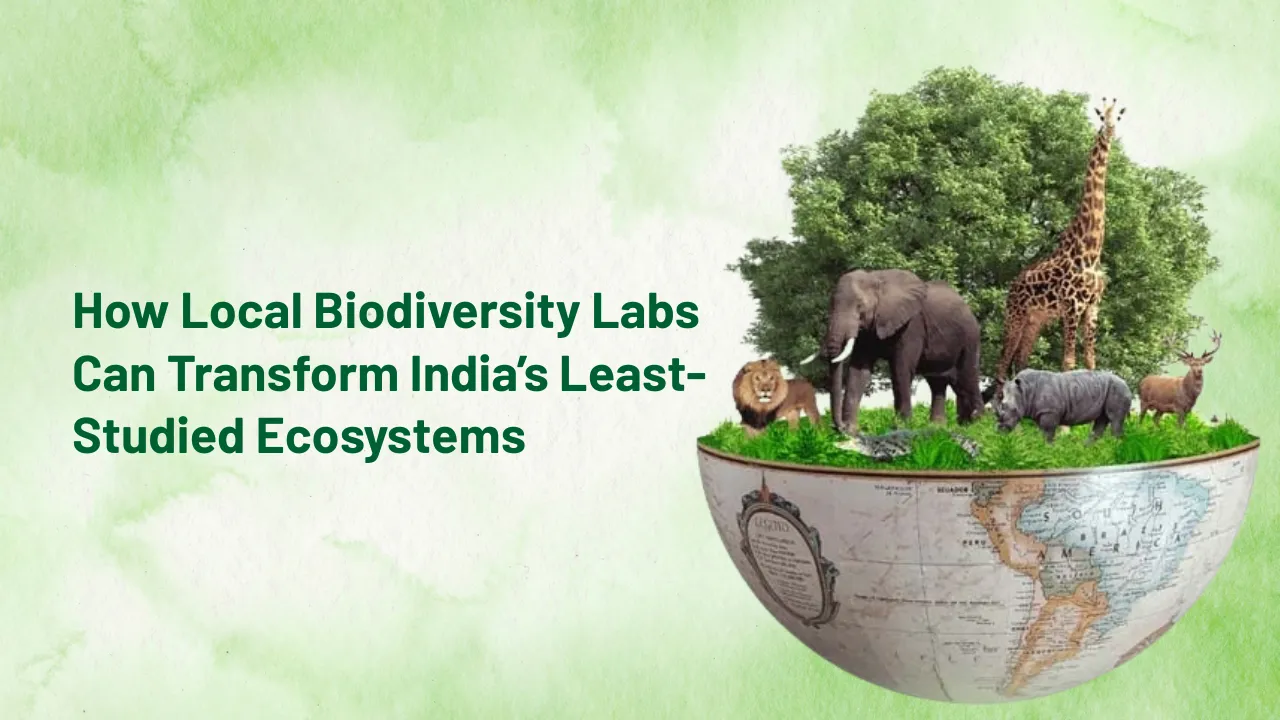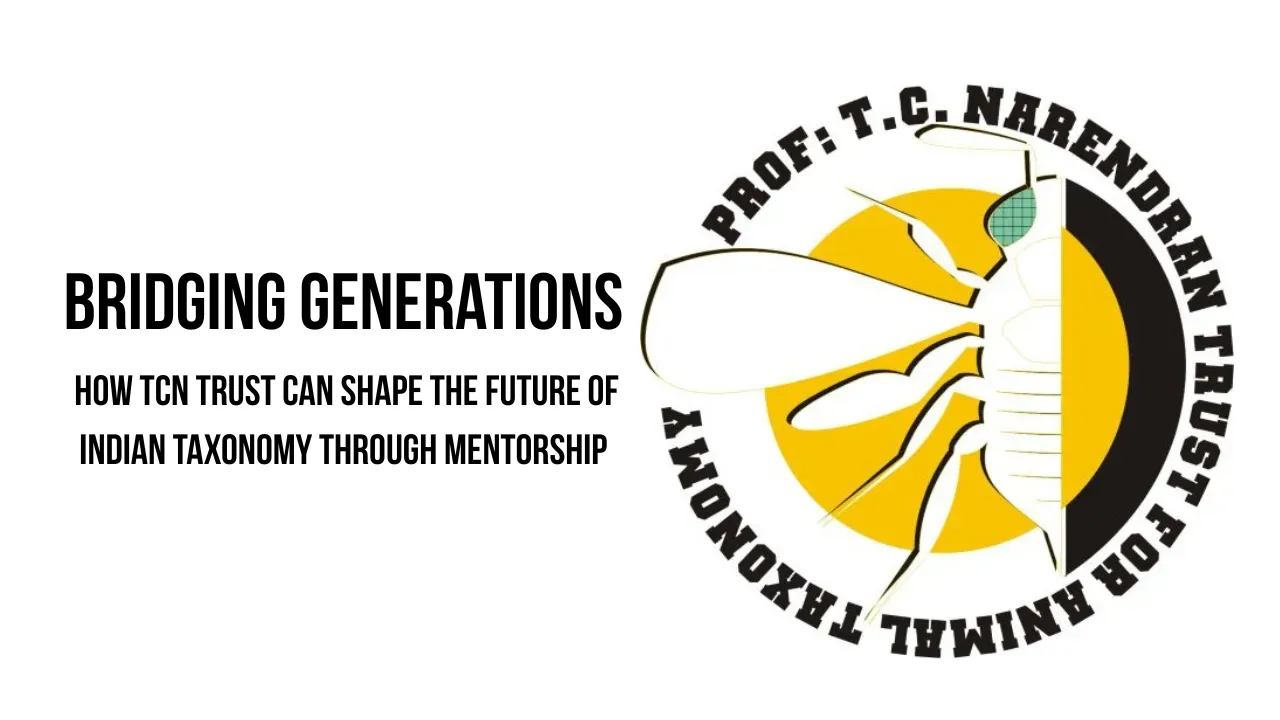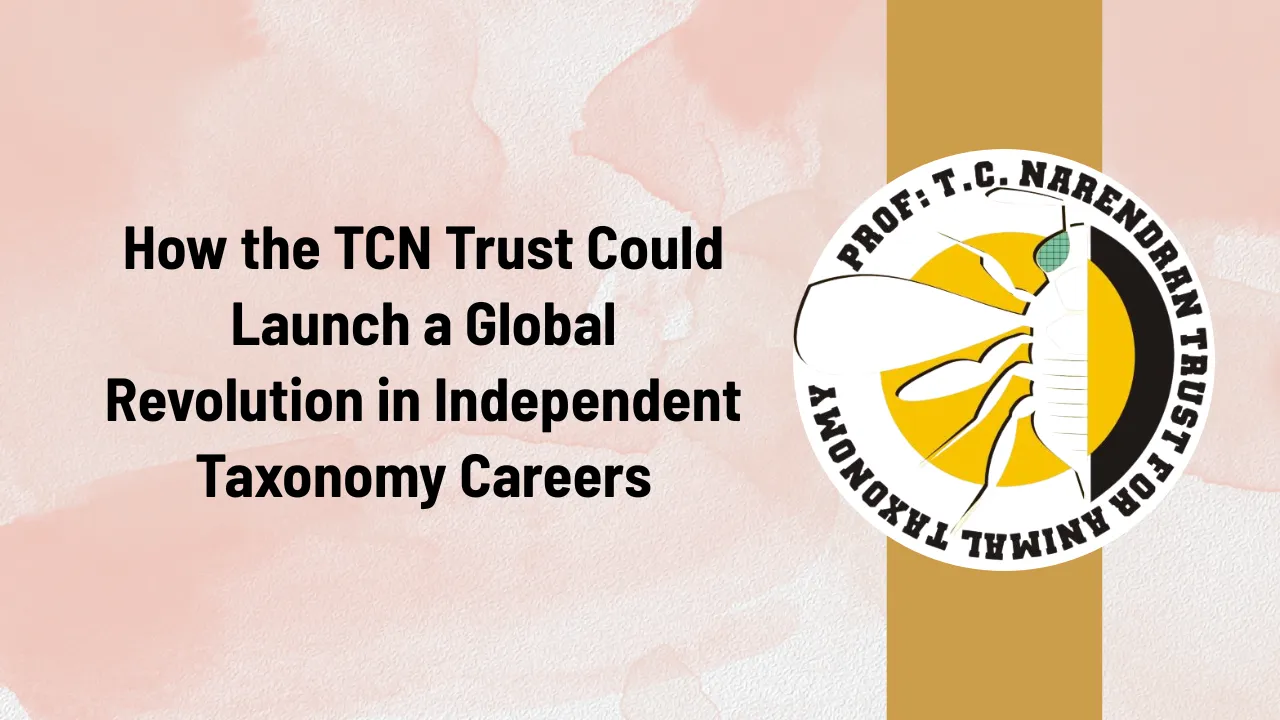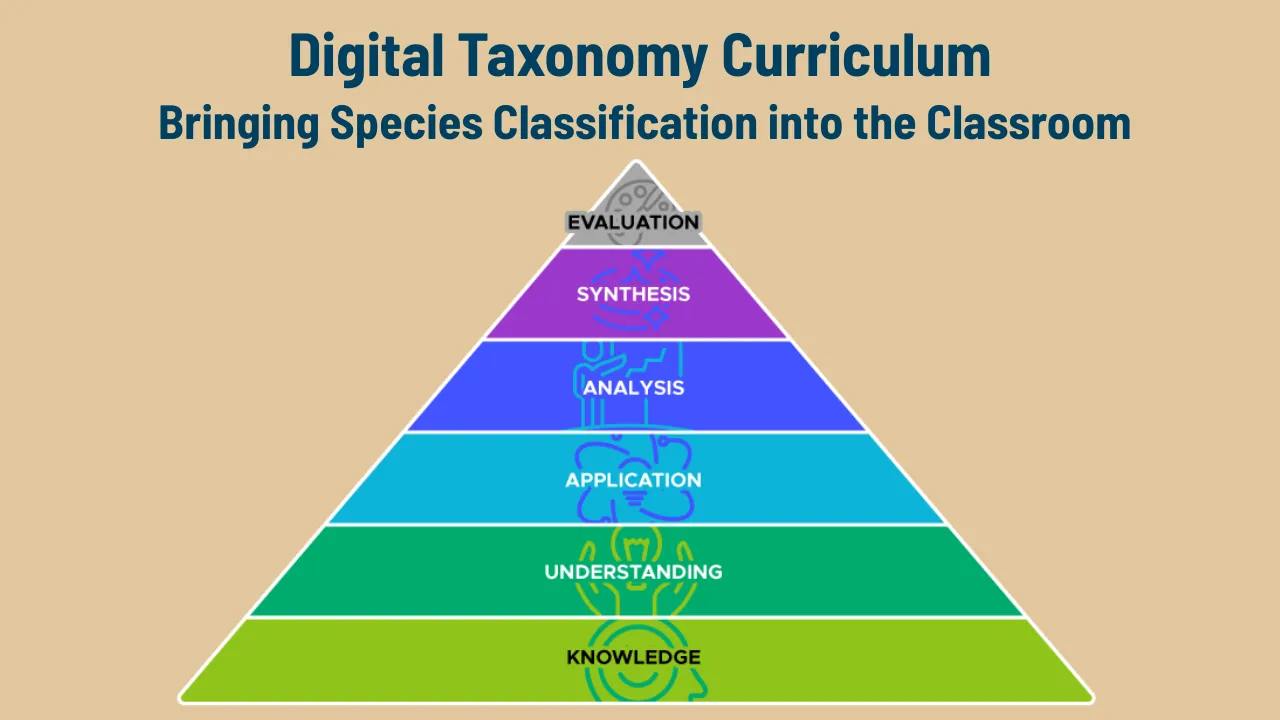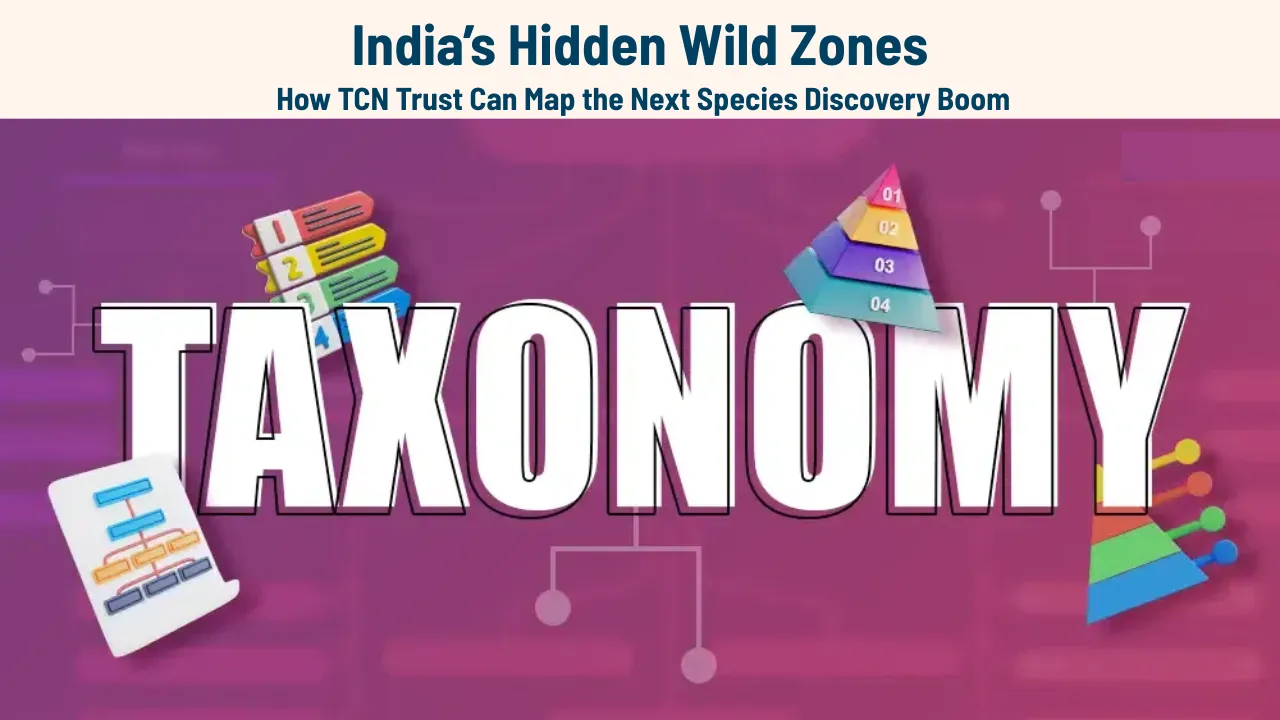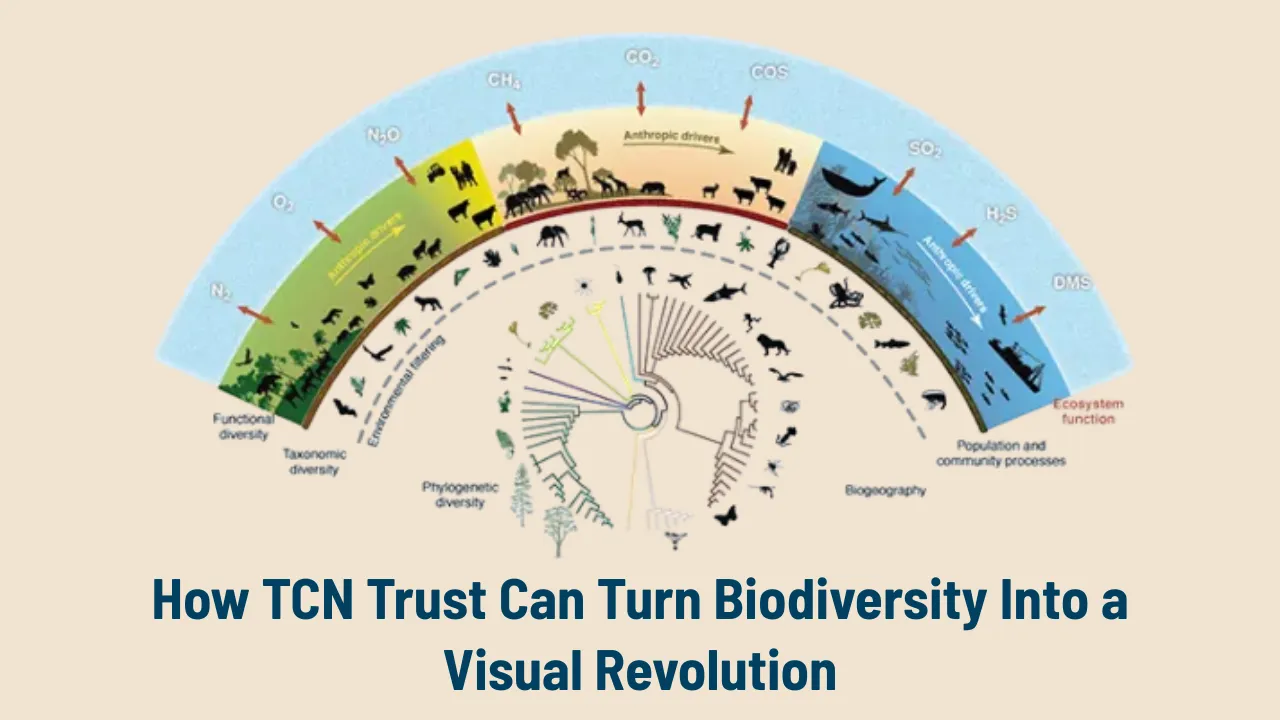Regional Taxonomy Hubs: Regional Taxonomy Hubs offer a bold path forward in bridging India’s deep taxonomic divides. While biodiversity-rich zones are scattered across the country, much of the research and species identification is concentrated in a few academic and metropolitan centers. This imbalance leads to neglected ecosystems, underreported species, and missed conservation priorities—particularly in ecologically significant but underrepresented Indian states.
This article explores the powerful idea of decentralizing taxonomic work by establishing dedicated hubs in lesser-covered regions. Through these hubs, organizations like TCN Trust can nurture local ecological knowledge, accelerate species discovery, and build state-level capacity for biodiversity documentation. The time is ripe to democratize taxonomy and bring research closer to the land it seeks to protect.
Regional Taxonomy Hubs: Powering Local Discoveries and Conservation
Regional Taxonomy Hubs are compact, accessible centers dedicated to cataloging and studying biodiversity at the local level. By placing these hubs in underrepresented states, the research ecosystem becomes more inclusive and responsive to regional ecological realities. These centers can operate physically, digitally, or in hybrid formats, supported by organizations like TCN Trust. Beyond just species identification, these hubs can integrate community science, map ecosystem data, and produce conservation insights that national efforts often overlook. From dry forests to coastal habitats, every overlooked region deserves its own node of scientific inquiry—and these hubs can lead the way.
Why Regional Hubs Are Urgently Needed
| Region | Key Challenge | Biodiversity Potential |
| Northeast Hills (e.g. Tripura) | Logistical barriers, limited research stations | Endemism and high species turnover |
| Chhattisgarh and Jharkhand | Sparse taxonomic studies | Dense forest coverage with undocumented life |
| Rajasthan interior zones | Focus on desert fauna only | Hidden diversity in rocky and scrub habitats |
| Odisha and Eastern Ghats | Fragmented research efforts | Freshwater and hill species underreported |
| Lakshadweep and remote islands | Lack of local scientific capacity | Unique marine and island ecosystems |
Why We Need Regional Taxonomy Hubs
India’s biodiversity mapping efforts are incomplete—not due to lack of life forms, but due to lack of presence in the field. Research institutions and scientists are heavily concentrated in a handful of locations, leading to what experts call taxonomic gaps. Meanwhile, places like central India, the eastern coast, and hill states often remain under-documented despite being biologically rich.
Regional Taxonomy Hubs offer a focused, regional approach. These hubs would identify, document, and analyze species found locally, feeding their data into national biodiversity databases. With consistent field presence and collaboration with communities, such hubs can fill crucial knowledge voids and even accelerate new species discoveries.
Benefits of Petrol Pump-Based Collection
Creating local biodiversity research centers ensures that even the most remote or overlooked ecosystems are represented in India’s conservation planning. Here are some core benefits:
- Faster Documentation: With local personnel and proximity, the lag between collection and identification is reduced.
- Wider Coverage: Areas often ignored in mainstream research receive focused attention.
- Capacity Building: Hubs serve as training grounds for students, forest staff, and local enthusiasts.
- Decentralised Taxonomy: The model distributes scientific infrastructure across the country.
- Integration with Communities: Local ecological knowledge becomes a key research resource.
These advantages make Regional Taxonomy Hubs not just scientific assets but civic tools for biodiversity awareness and action.
How the Model Works
The operational blueprint for a Regional Taxonomy Hub is both practical and adaptable. Whether it’s a room in a government college, a small lab in a forest department outpost, or a digital collaboration hub hosted online, the essential functions remain the same:
- Data Collection: Daily or seasonal fieldwork in local habitats.
- Specimen Analysis: Use of microscopes, field guides, and digital resources to identify and catalog.
- Community Engagement: Regular workshops and nature walks to involve schools and local residents.
- Data Sharing: Upload findings to national platforms like the India Biodiversity Portal or GBIF.
- Feedback Loop: Use research to support habitat restoration, eco-tourism planning, or species recovery efforts.
This model ensures that field data quickly turns into actionable conservation intelligence.
Key Components of the System
- Hub Anchors: Colleges, NGOs, or forest divisions that host and operate the hub.
- Mentor Network: Partner institutions and taxonomists who validate findings and train staff.
- Standard Protocols: Shared survey and identification guides for consistency.
- Digital Integration: Mobile apps and cloud platforms to log data in real time.
- Open Access Policy: All data to be made publicly available for transparency and reuse.
With these features, Regional Taxonomy Hubs become knowledge factories embedded within their own environments.
List: How to Establish Regional Taxonomy Hubs
- Identify ecologically important but underrepresented districts.
- Reach out to educational and forestry institutions willing to host hubs.
- Train young naturalists and local field guides in taxonomy basics.
- Equip the hubs with tools for fieldwork and specimen documentation.
- Establish peer review partnerships with senior scientists or national labs.
- Build public-facing awareness campaigns to popularize the work.
List: Advantages for Stakeholders
- Researchers: Field-ready teams that can assist in specimen collection and monitoring.
- Conservation Planners: Fresh and reliable data to inform strategies and EIA processes.
- Local Communities: Ownership over natural heritage and opportunities for income via eco-tourism.
- State Governments: Data-driven policy formulation at the district and block level.
- TCN Trust and Partners: Scalable model to build a nationwide network of citizen-powered labs.
Role of TCN Trust in Leading This Model
With its strong grounding in grassroots biodiversity research, TCN Trust is ideally positioned to lead this initiative. Its credibility, scientific network, and on-ground experience can ensure each hub meets research standards while remaining locally embedded.
TCN Trust can provide starter kits, training modules, and mentorship pipelines to turn interested colleges, NGOs, and nature clubs into fully functional Regional Taxonomy Hubs. More importantly, it can act as a central repository of the data being generated—ensuring open access, validation, and credit to contributors.
By 2030, such a model could easily scale to include at least one hub in every underrepresented district of India.
Challenges and Solutions
Lack of Awareness: Many institutions may not understand the role of taxonomy.
Solution: Host introductory workshops and offer fellowship programs.
Resource Constraints: Remote regions may lack lab or storage facilities.
Solution: Focus on digital data capture and minimal-setup documentation.
Expertise Shortage: Young researchers may lack training.
Solution: Launch TCN-curated certification programs in basic taxonomy and species survey methods.
FAQs
1. What qualifies a location for a Regional Taxonomy Hub?
A high biodiversity area with limited scientific infrastructure and low species documentation is an ideal candidate.
2. Can students or amateur naturalists join the hub?
Yes, hubs aim to include local talent, students, and volunteers to build regional taxonomic capacity.
3. How are the findings from the hubs verified?
Each hub will be linked to a mentor network of senior taxonomists who will review and validate species records.
4. Do these hubs need large funding to operate?
Not necessarily. Many hubs can start with minimal resources and grow with local and donor support.
5. Will the data from these hubs be publicly accessible?
Yes, all records will be shared via open platforms for research, conservation, and education purposes.
Final Thought
If India hopes to build a complete picture of its living wealth, it must begin where the gaps are widest. Regional Taxonomy Hubs offer an inclusive, scalable, and effective model to decentralize biodiversity research and connect every habitat—no matter how remote—to the national conservation story.
By leading this effort, TCN Trust can set a precedent not just for better science, but for a more democratic approach to ecology. It’s time to let knowledge grow from the ground up.
If you know a region that needs its own taxonomy hub, share it with us. Your idea could help bring biodiversity into the spotlight where it’s long been missing.
